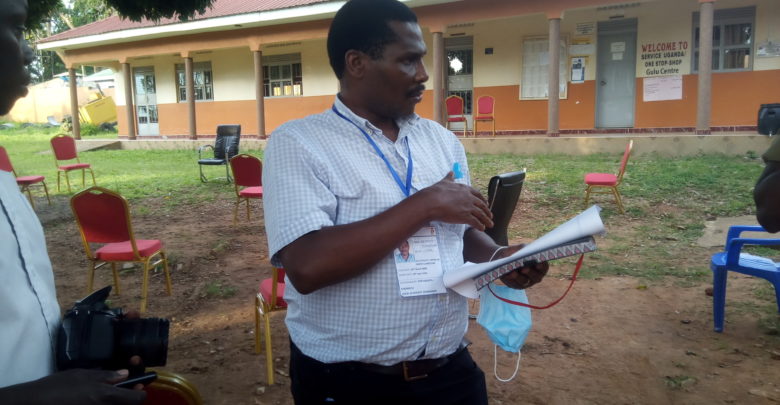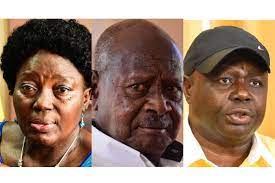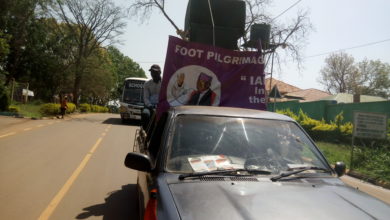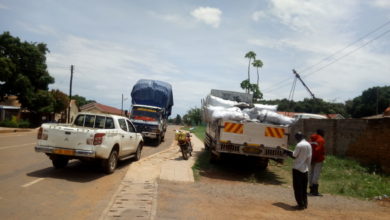
Global Politics
UGANDA: GULU RESIDENCE DISTRICT COMMISSIONER CHALLENGES SECURITY TO ARRESTED LEGISLATORS FOR DEFIANCE OF PRESIDENTIAL DIRECTIVE ON COVID-19 CAMPAIGN.
The Aruu County MP Odonga Otto was right and wrong on the method of communication
Village youths are reluctant observing social distances, they come in the evening to line along roadside in Nwoya District, Northern Uganda just to pass time as if there is no cufue in place
Major Santo Okot Lapolo the Gulu Residence District Commissioner while chairing weekly Task Force COVID-19 meeting says social distancing in Gulu district is only 24 percent, while hand washing is only 40 percent in rural areas.
Odonga Otto, the Aruu County MP is circulating information in social media telling and inciting medics of Gulu Regional Referral Hospital to evacuate hospital because of the COVID-19 positive truck driver who has been admitted in Gulu Referral Hospital. Odonga is in his social media messages meaning Gulu Hospital lack PPE, and Acholi Sub Region is ill equip with PPE
GULU-UGANDA: The COVID-19 pandemic lock down and the later rapid interference mobilization by Aruu County MP, Odonga Otto blocking COVID-19 positive truck driver not to be brought to Gulu Regional Referral Hospital. Then the latest admission of COVID-19 in isolation ward.
Blocking COVID-19 positive person is not a solution as per now, what the authority should do is putting mechanism how to handle community, through social distancing, base in our traditional line and with President Museveni presidential directives.
So the like of Odonga Otto sectarianism to a level of Stone Age ear, “Odonga Otto is looking for his voting to go back to Parliament to justify his course of action.”
What a hell are we doing, when the social distancing is only 25% in rural areas, while hand washing is only 40% in rural areas? Odonga Otto should focus his energy on that rather than demobilizing COVID-19. What a rot is this?
On April 15, blocked Kenyan truck driver not to be brought to Gulu, on the ground that people will be affected.
Odonga Otto his message on social media is accusing Gulu Health Worker for working for money. In his message was telling people to like the Gulu City because they will be affected?
Dr. Benson Tumwesigye head of Ministry of Health Official argued Gulu COVID-19 Task Force to ignore the Odonga Otto message on social media on the ground that medical doctor they are military forces.
“In 2003 when the Ebola killed one person I was just posted to Kiryadongo Hospital, but my people was telling me to live the hospital, but insisted and stayed in the hospital until the Ebola was over”.
Adds on that although he will be living to Kampala, but his Health Official will be staying behind to monitor COVID-19 situation, they will be helping Gulu Task Force.
Okello Oryema, the Chairman for Nwoya District Local Government says his district created ward of 16 beds, and they have, trained 8 medical staff personnel and reallocated Anaka Pope Paul Secondary School.
“We are prepare although now this facilities we feel is not enough when you look at the population of Nwoya district.” Okello Oryema reasoned.
Okello Oryema worry is that truck drivers still give them mayhem, this arise from how some people who has been dealing in getting diesel oil from truck drives, they are still continuing of their market.
However, the community they are very vigilant, truck drivers would handle be lynch should they stop in any part in Nwoya district, but the biggest problem the long drivers are causing, they still drop bottle water along the way.
Some community take it likely their act is suicidal because of the outbreak they are prone to danger of COVID-19, they become the prime victims of COVID-19. Can you discuss how they are, Okello Oryema wondered.
“The issues of social distances in the evening are not respected, the youths intention is to come and relocate at the road side. They don’t understand they are expose to COVID-19 pandemic”
The Chairman of Nowya major concern is that the youth dismissed the conception of community especially young people many of them think that COVID-19 is a diseases for the rich and people who live in cities. Some of them think this disease are for the people who live aboard in Europe.
Adds on that more sensitization are require to address the challenges of this misconception
Oryema disagree of the issue of mask to be imported of manufacture by Indian company, says COVID-19 is nothing but flue, this scientific reason and he would not going to enter into it. We are looking for this lock down, he welcome the lock down.
“Even president has turned himself to become marketer of foreign multi international cooperation, the pharmaceutical they are happy for that, the government cannot move outside to import this sensitizers items.
“I don’t except because we have tailors who can make the masks in Gulu City, we have more than 300 tailor machines that can make 3,000 million masks in a day.”
He challenged the Health Minister Ruth Jane Aceng who addressed Gulu Task Force and told them that there is an Indian Company that they are ready to produce Mask in a month time, and therefore 45 million people of Uganda will put on the mask when finally the lock down is over.
Nwoya Chairman warns that we much learn to talk with evidence to support the country we don’t need to hire foreign companies to support the government has the procumbent system in place




